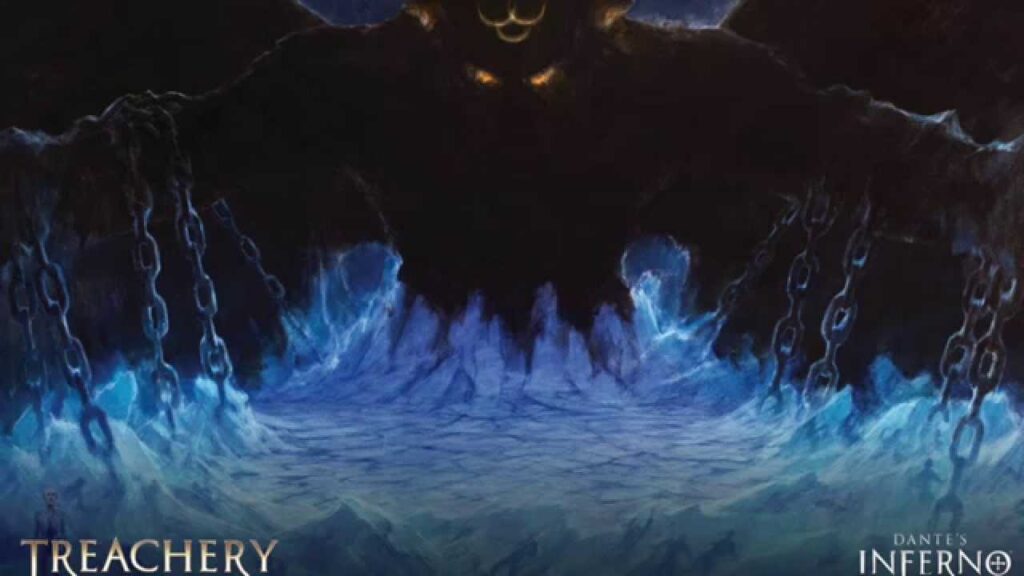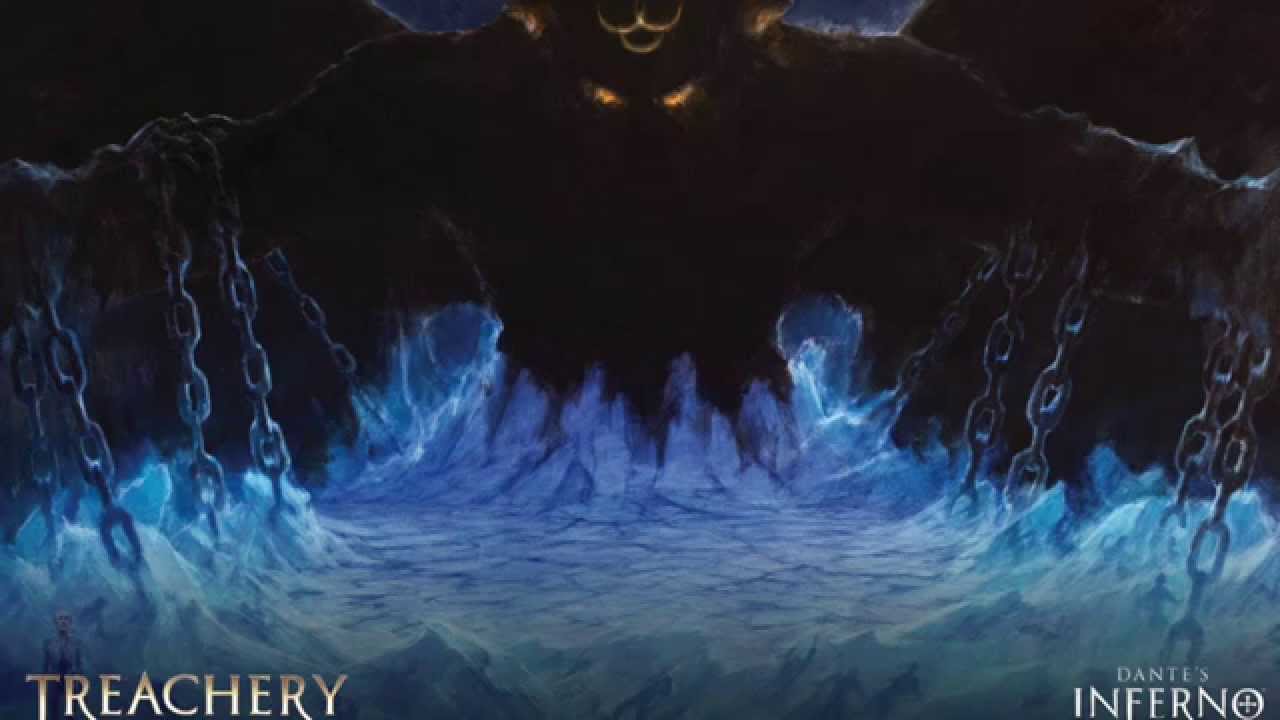
Treachery and Ice: Exploring Dante’s 9th Circle of Hell
Dante Alighieri’s Inferno, the first part of his epic poem Divine Comedy, is a journey through the depths of Hell. This journey culminates in the chilling and horrifying 9th Circle of Hell, a frozen wasteland reserved for the ultimate sinners: traitors. Understanding the significance and symbolism within Dante’s 9th Circle of Hell provides profound insight into the poet’s moral framework and the medieval worldview on sin and betrayal.
This article will delve into the icy depths of Cocytus, the frozen lake at the heart of Dante’s 9th Circle of Hell, examining its structure, inhabitants, and the philosophical underpinnings that shaped its creation. We’ll explore why Dante considered treachery the gravest of sins and how he visually and symbolically represented it in his masterpiece.
The Structure of Cocytus: A Frozen Wasteland
Unlike the fiery torments of the upper circles, Dante’s 9th Circle of Hell is a frozen lake called Cocytus, formed from the tears of Lucifer. This icy expanse is divided into four distinct rounds, each reserved for different types of traitors, each more heinous than the last. The deeper one descends, the more profoundly the traitors are encased in ice, reflecting the increasing coldness and isolation of their sin.
- Caina: Named after Cain, who killed his brother Abel, this round houses traitors to their kin. They are immersed in the ice up to their faces, allowing them to bow their heads but unable to see.
- Antenora: Named after Antenor of Troy, who betrayed his city to the Greeks, this round is for traitors to their country. Here, the sinners are even more deeply frozen, unable to bend their necks.
- Ptolomea: Named after Ptolemy of Jericho, who murdered his father-in-law at a banquet, this round is reserved for traitors to their guests. Uniquely, their souls descend here even before their bodies die, with demons inhabiting their still-living forms on Earth. They lie supine in the ice, their faces turned upwards.
- Judecca: Named after Judas Iscariot, who betrayed Jesus Christ, this is the deepest and most horrifying part of Dante’s 9th Circle of Hell. Here reside the traitors to their benefactors. Completely encased in ice, they are contorted into grotesque shapes.
The Inhabitants of the Frozen Lake
The inhabitants of Dante’s 9th Circle of Hell are not merely suffering; they are frozen in a state of perpetual isolation and remorse. Their inability to move or communicate underscores the complete severing of human connection that characterizes treachery. Some of the notable sinners Dante encounters include:
- Bocca degli Abati: A Florentine Guelph who betrayed his own side in battle, contributing to their defeat.
- Count Ugolino: A Pisan nobleman who, along with his sons and grandsons, was imprisoned and left to starve to death. Dante depicts him gnawing on the head of Archbishop Ruggieri, who betrayed him. This scene is one of the most gruesome and memorable in the Inferno.
- Archbishop Ruggieri: The Pisan archbishop who betrayed Ugolino. He is eternally devoured by Ugolino, a testament to the unending cycle of betrayal and vengeance.
- Friar Alberigo and Branca d’Oria: Examples of sinners in Ptolomea, whose bodies are still alive on Earth, possessed by demons while their souls are tormented in the ice.
- Lucifer: At the very center of Judecca, frozen in the ice up to his chest, is Lucifer himself. He is depicted as a grotesque, three-faced demon, each mouth chewing on a historical traitor: Judas Iscariot, Brutus, and Cassius.
The Significance of Ice as Punishment
The choice of ice as the instrument of punishment in Dante’s 9th Circle of Hell is deeply symbolic. Fire, typically associated with Hell, represents passion and uncontrolled desire. Ice, on the other hand, represents the complete absence of love, warmth, and human connection. Treachery, in Dante’s view, is the ultimate act of cold-heartedness, severing the bonds of loyalty and trust that hold society together. The frozen wasteland of Cocytus perfectly embodies this profound emotional and spiritual desolation.
The increasing depth of the ice corresponds to the severity of the betrayal. Traitors to kin are partially submerged, still able to see, albeit with difficulty. Traitors to their country are more deeply frozen, their necks unable to bend, symbolizing their inability to show remorse or humility. Finally, the traitors to their benefactors are completely encased in ice, utterly isolated and immobile, representing the complete annihilation of their humanity.
Treachery as the Ultimate Sin
Dante’s placement of treachery as the worst of all sins reflects the medieval emphasis on loyalty and social order. In a world where societal stability depended on oaths, vows, and reciprocal obligations, betrayal was seen as a direct attack on the very foundations of civilization. Treachery undermined trust, fostered chaos, and threatened the delicate balance of power.
Furthermore, treachery is a sin that violates the most sacred bonds: those of family, country, and hospitality. By betraying those who are closest to them or who have offered them protection, traitors demonstrate a profound lack of gratitude and a complete disregard for the moral obligations that bind individuals together. Dante’s depiction of the 9th Circle of Hell powerfully illustrates the consequences of such actions.
Lucifer’s Role in the 9th Circle
Lucifer’s presence at the center of Dante’s 9th Circle of Hell is particularly significant. He is not a figure of active torment, but rather a frozen, impotent being, trapped in the very ice he helped create. This portrayal of Lucifer as a pathetic figure, rather than a powerful and charismatic rebel, underscores Dante’s view of evil as ultimately self-destructive and sterile. Lucifer’s three faces, each chewing on a different traitor, symbolize the perversion of the three aspects of love: love for God (Judas), love for one’s country (Brutus), and love for one’s benefactor (Cassius). By corrupting these fundamental bonds, Lucifer embodies the ultimate source of treachery.
The enduring legacy of Dante’s depiction
Dante’s vision of the 9th Circle of Hell continues to resonate with readers centuries after its creation. The chilling imagery of the frozen wasteland, the grotesque figures of the traitors, and the profound moral implications of treachery have left an indelible mark on Western culture. The concept of Cocytus has been referenced in literature, art, and film, serving as a powerful symbol of the consequences of betrayal and the importance of loyalty.
The enduring appeal of Dante’s 9th Circle of Hell lies in its ability to tap into our deepest fears and anxieties about human nature. It reminds us of the fragility of trust, the devastating impact of betrayal, and the importance of upholding our moral obligations to one another. By confronting the horrors of Cocytus, we are forced to confront the darkness within ourselves and to strive for a more virtuous and compassionate existence.
Modern Interpretations and Relevance
While rooted in a medieval worldview, the themes explored in Dante’s 9th Circle of Hell remain relevant today. The concept of treachery, in its various forms, continues to be a source of conflict and suffering in the modern world. Whether it is political betrayal, corporate espionage, or personal infidelity, the act of violating trust can have devastating consequences.
Modern interpretations of Dante’s 9th Circle of Hell often focus on the psychological dimensions of treachery. The frozen state of the traitors can be seen as a metaphor for the emotional numbness and isolation that often accompany betrayal. The inability to move or communicate reflects the profound sense of disconnection and alienation that can result from violating trust. [See also: The Psychology of Betrayal]
Furthermore, the concept of Ptolomea, where souls descend to Hell before their bodies die, can be interpreted as a commentary on the dehumanizing effects of treachery. When individuals engage in acts of betrayal, they often lose their sense of empathy and compassion, becoming mere shells of their former selves. This loss of humanity is symbolically represented by the demonic possession of their still-living bodies.
Conclusion: A Timeless Warning
Dante’s 9th Circle of Hell, with its frozen landscape and eternally tormented inhabitants, stands as a powerful and enduring warning against the dangers of treachery. It reminds us of the importance of loyalty, trust, and moral obligation, and serves as a chilling reminder of the consequences of violating these fundamental principles. By exploring the depths of Cocytus, we gain a deeper understanding of the human capacity for both good and evil, and are challenged to strive for a more virtuous and compassionate world.
The icy wasteland serves as a potent symbol of the spiritual death that results from betrayal, a fate Dante clearly considered the most abhorrent. As we navigate the complexities of human relationships and societal structures, the lessons of Dante’s 9th Circle of Hell remain profoundly relevant. [See also: Moral Philosophy and Dante’s Inferno]

